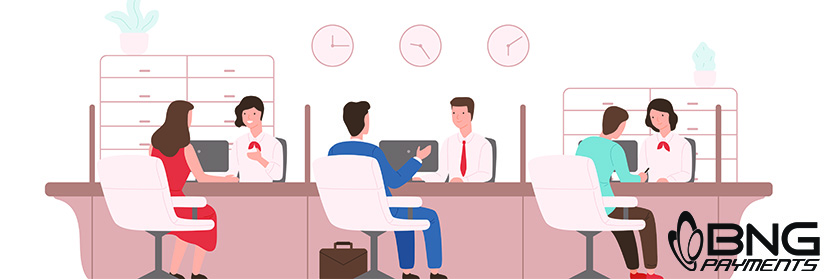
ACH Credit is an agreement between you and your bank to deduct a payment from your account when instructed.
When you are processing an ACH transaction, you are sending or receiving electronic payment data across the ACH Network. When one of these transfers occurs, it is known as an ACH Credit or Debit. In this article, we will be looking at everything concerning ACH credit: what it is, how it works, the fee involved in ACH credit transactions, ACH credit comparison with ACH debit, and finally security considerations of ACH credit.
An ACH credit is the digital transfer of funds from one financial institution to another. For instance, getting paid by an employer through direct deposit or receiving government benefits, such as Social Security. Usually referred to as “push” transactions, ACH credits often take 1-2 business days to process since the request for a transaction is not immediately sent. Without a doubt, the most common type of ACH credit is direct deposit payment methods.
Furthermore, ACH credits can be used to make payments (as opposed to getting electronic payments). For example, setting up payment requests and automatic bill payment or mortgage payment with your business bank. Another example is business owners that choose to direct payments of state taxes (tax payments) through ACH credit. Although the word “credit” may make you think of making purchases and financial transactions with a credit card, the above examples highlight how an ACH credit can also be used to make automatic payments.
With ACH credit transfer forms of payment, the payer is the one who initiates the transfer. Electronic funds are pushed into the receiving deposit account by the payer. If a business pays an invoice using the Automated Clearing House, the payment would be an ACH credit to the payee’s account.
Every Automated Clearing House payment (ACH payment) runs through the U.S. clearing house system, a network of United States financial institutions. The network includes the Federal Reserve and is overseen by the National Automated Clearing House Association (NACHA). The ACH network is primarily used to make domestic electronic payments between U.S. banks.
Each person or business must authorize the fund's transfer. Once authorization is complete, the initiating financial institution either pushes the funds out (an ACH credit) or pulls the funds in (an ACH debit).
Payments, through the electronic network, are sorted and processed together by a clearing house that does electronic checks and verifies the transfers. The funds are available to use between 2 and 5 business days later, but some fast-growing ACH networks are now providing same day ACH payments.
Businesses can deposit employee paychecks and benefits and pay recurring bills by transferring money via ACH credits. They use them for one-time expenses like paying an accountant for annual tax preparation or, for instance, monthly payment of other utilities (e.g., loan payment)
Customers of many businesses benefit from a service that allows them to have their monthly utility payments deducted directly from their accounts on a pre-determined date.
In addition to being quick, cheap, and convenient, ACH payments are straightforward and can be made or received anywhere.
When you pay someone by ACH credit, the processing fees are exceptionally low. You will pay a small amount as the sender—usually less than the actual cost of printing and mailing a check—and the business you are paying will not have to pay anything.
Vendors prefer businesses that pay by ACH credit because, unlike credit cards, ACH payments are deposited in full. Vendors avoid processing costs and credit card rates without having to go to the bank to deposit funds.
In addition, electronic transfers and payment authorization are processed in a way that is both easy and secure—especially when compared to physical checks. But the best thing about the ACH payment option is how much time it can save.
Instead of printing, signing, and mailing many physical checks every month, you can pay those bills digitally with a few clicks. You can also manage your recurring bills through automation, so you only need to get approvals for unusual things.
There are a few differences between ACH debit and ACH credit transactions.
Of course, there are security risks and security advantages to using ACH, just like any other form of payment. For example, a criminal can access a commercial account, create an ACH file, and make a payment to an originator, before the fraud is ever discovered.
NACHA lists several distinct types of fraud to be aware of including scammers pretending to be the FDIC and "money mule scams."
But ACH has several security advantages, such as eliminating paper checks, scheduling regular payments, reducing human error, and avoiding the problems of card skimmers often found on retail credit card terminals.
Let us show you what we can do. Contact us to find out more.
